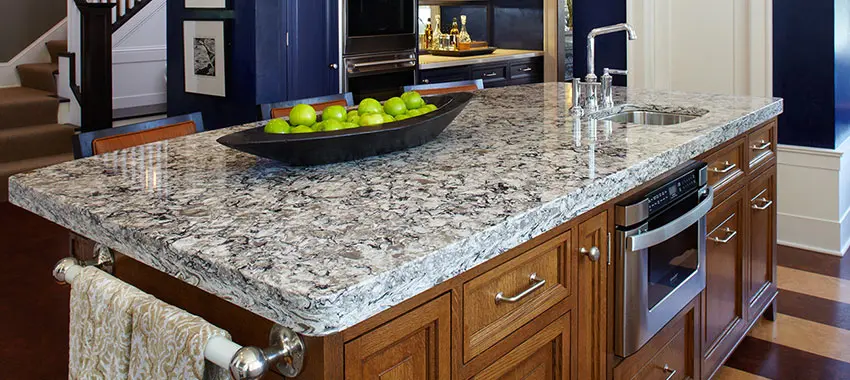
How Can You Tell Quality Of Granite?
- Posted on
- FlintstoneCountertops
If you have been shopping for granite countertops, you must have realized that they don’t come cheap. This calls for you to be cautious when purchasing, so you buy high-quality granite surfaces that will look good for long and last for a long time.
Wondering how can you tell quality of granite? There are plenty of ways you can go about it. To help you out, here are some of these ways:
Check the price
This is a dead giveaway. Like any other product, low-quality granite will sell at a much lower price. Hence, if you pop into a countertop store and you find the countertops selling at a lower price than the standard market prices, chances are the countertops are poor quality, and you should look elsewhere.
Check the color and pattern.
Another way to tell the quality of the stone is to check the color and patterns. As you are inspecting the stone, you should note that granite is natural, so like any other natural product, you should expect diversity, so if you come across a slab with the same color and pattern, it’s most likely not natural granite, and you should avoid buying it.
As mentioned, granite is a natural product, so you should expect every granite slab to be unique. This means that the color, texture, and veins on the countertop surface shouldn’t be the same in all sections of the slab.
Tap the countertop
Did you know you can tell the quality of the slab by simply tapping on it? When you are in the countertop store, simply give the countertop a tap and listen to the sound. A natural, good-quality granite should give a ringing sound when tapped, while a cheap, manufactured granite, won’t give the ringing sound.
The poor quality granite won’t make the unique sound because it’s made from resins and quartz crystals that are non-porous, and due to this, the sound produced will be muted or dull.
Do the water test
It might sound like you have to go to the laboratory and test, but this isn’t the case. All you have to do is to pour water on a granite slab and see how it behaves.
If the granite slab is natural and of good quality, it should absorb water, but the water should run off the slab if low quality.
This is because manufactured granite is made from epoxy resins that are nonporous, so they won’t absorb water after pouring it there.
Natural granite, on the other hand, will absorb water. The easiest way to tell that the stone is absorbing water is by looking at the stone. Does the stone darken as the water stays on the surface?
Inspect the granite seams
If you have already installed the countertops, you want to confirm whether you installed the right pieces and take a look at the seams.
If the countertop is poor quality or artificial, it won’t have any change in the pattern along the seams, but with real, good-quality granite, you will have a noticeable change in pattern.
Although most experienced contractors do a good job at minimizing the pattern change as they are lining up the seams, you should still see the seam changes on a closer look.
Check the polish quality.
In the same way, you would judge the quality of a car by the quality of paint, you should judge the quality of granite by the quality of the polish.
As you can expect, the higher the granite quality, the better the polish quality.
The best way to tell the quality of the polish is to gently brush a coin on the polished granite surface. If the surface easily scrapes, the polish and the granite countertop are low quality, but it’s high quality if the polish is resistant to the impact.
Measure the granite thickness
The final thing you should pay attention to the thickness of the slab. According to granite installers Potomac, you should avoid thin granite as it will not only be unpleasant to look at but also brittle upon installation as it can easily break even from the slightest impact.

